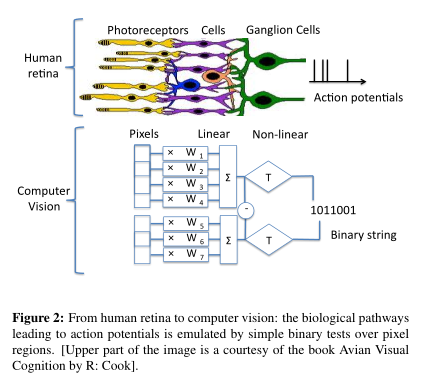On my god, it's full of local binary patterns!
I recently had need to look into feature descriptors. I've previously played with SURF and looked into others but I wasn't really happy with the complexity of the generator and needed something Java anyway.
A small search turned up FREAK (why the silly 'catchy' acronym names? Maybe it started with S-USANs?) which looked doable so I had a bit of a play. There is code available but it's OpenCV and C++ and the version I saw just wasn't very good code. I wrote up my own because I had some different needs for what I was looking at and porting the C++/OpenCV was going to be a pain.
I guess they work as advertised but i'm not sure they're what I want right now. I tried porting the AGAST detector as well but it wasn't really getting what I was after - i'm after specific features not just 'good features'.
The paper does include this interesting diagram though:
Although the paper doesn't reference them this diagram is pretty much a description of local binary patterns. The FREAK descriptor itself is just a very long local binary pattern with optional orientation normalisation.
Perhaps more interestingly is that this specific diagram could just as well be a description for how my fast object detector works. It is effectively a direct implementation of this diagram.
Assuming the above diagram is representative of human vision I guess one could say that the whole of visual reality is made of local binary patterns.

